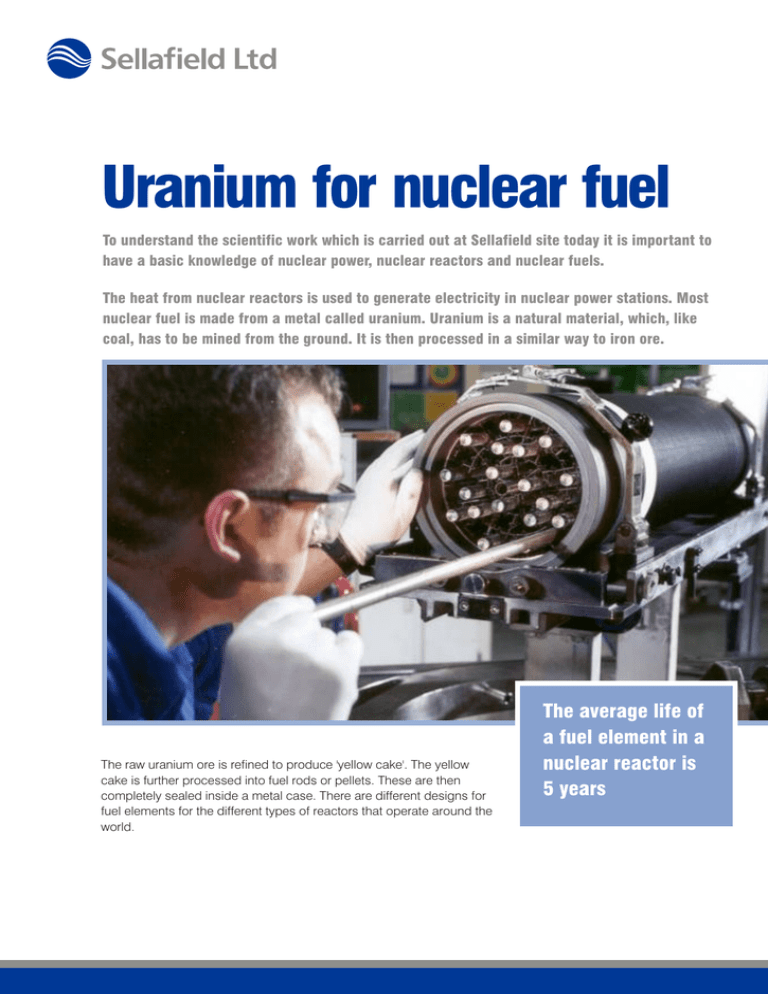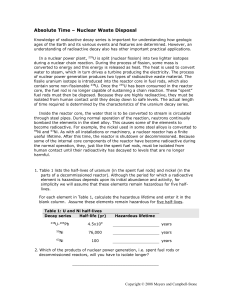Uranium for nuclear fuel.cdr
advertisement

Uranium for nuclear fuel To understand the scientific work which is carried out at Sellafield site today it is important to have a basic knowledge of nuclear power, nuclear reactors and nuclear fuels. The heat from nuclear reactors is used to generate electricity in nuclear power stations. Most nuclear fuel is made from a metal called uranium. Uranium is a natural material, which, like coal, has to be mined from the ground. It is then processed in a similar way to iron ore. The raw uranium ore is refined to produce 'yellow cake'. The yellow cake is further processed into fuel rods or pellets. These are then completely sealed inside a metal case. There are different designs for fuel elements for the different types of reactors that operate around the world. The average life of a fuel element in a nuclear reactor is 5 years How a nuclear reactor works - diagram of an AGR In an Advanced Gas-cooled Reactor the uranium fuel is loaded into the centre of the reactor, which is called the core. Inside the core, as well as the fuel, there are control rods, made of boron impregnated steel. These control rods do exactly what their name says. By raising and lowering the control rods, operators can control the amount of heat being produced in the nuclear reactor. When the control rods are fully lowered into the reactor they close the reactor down completely. If a problem arises, the control rods will drop down automatically into the reactor and shut the reactor down in just five seconds. In this type of reactor, carbon dioxide gas is pumped over the fuel to cool it and transfer the heat to the boilers to produce steam. The steam then drives a turbine, which in turn drives a generator to make electricity. Traditionally, coal, gas and oil are burnt in power stations to give the heat needed, but uranium produces heat when its atoms split in a process called nuclear fission. When a nuclear reactor has been operating for about five years, waste products build up in the nuclear fuel in the Sellafield Site Sellafield, Seascale, Cumbria CA20 1PG Tel: +44 (0)19467 28333 Fax: +44 (0)19467 28987 www.sellafieldsites.com reactor, reducing its efficiency so much that it has to be taken out and replaced. nearly a quarter of all the electricity in the UK comes from nuclear power stations Though this 'used' fuel has produced lots of electricity, only a small amount of the uranium has actually been used. This means that the fuel can be reprocessed or recycled so that the unused uranium can be recovered and made into new nuclear fuel. By reprocessing or recycling used fuel, 96% can be recovered as uranium and 1% as plutonium, only 3% as waste. By reprocessing 96% of the uranium can be recovered




